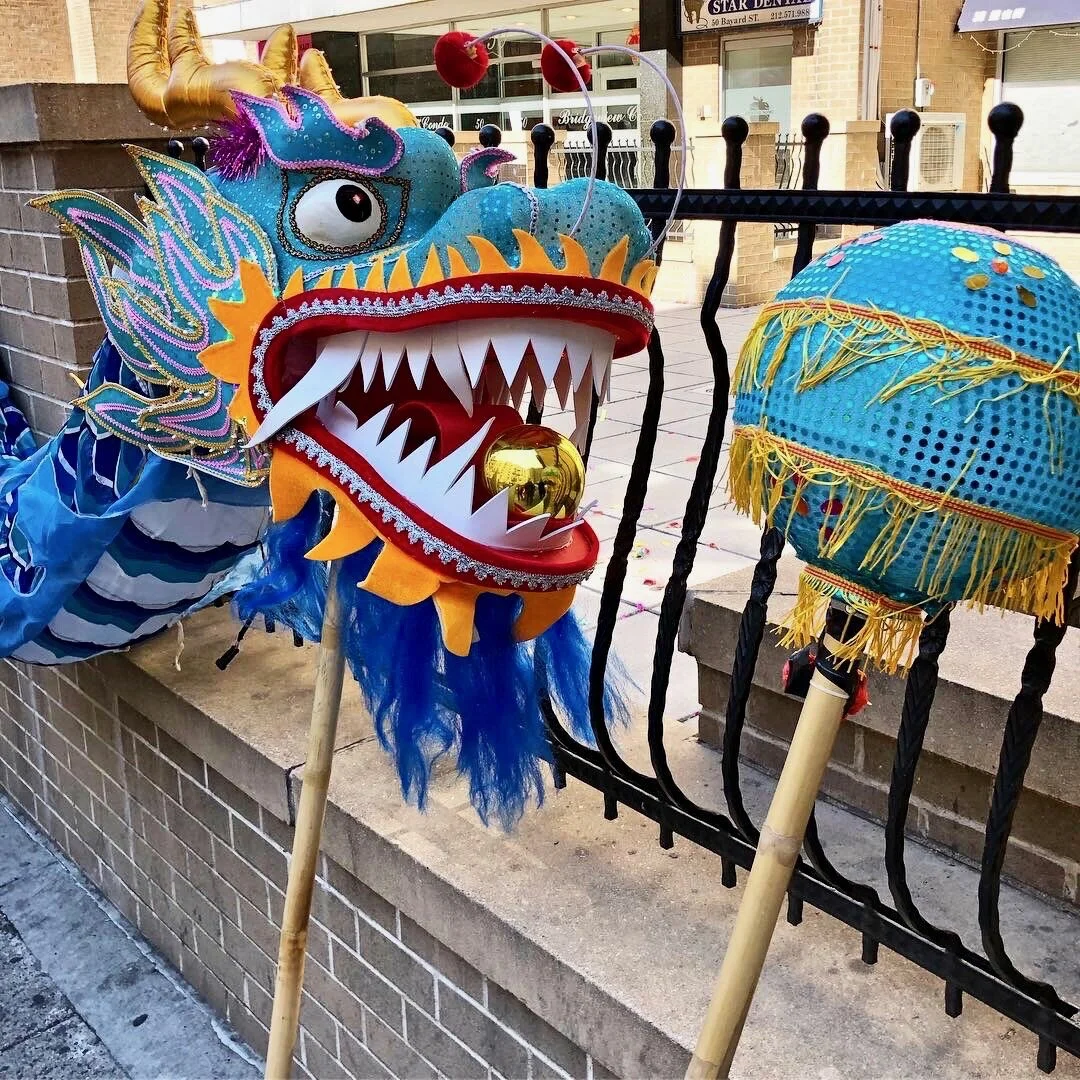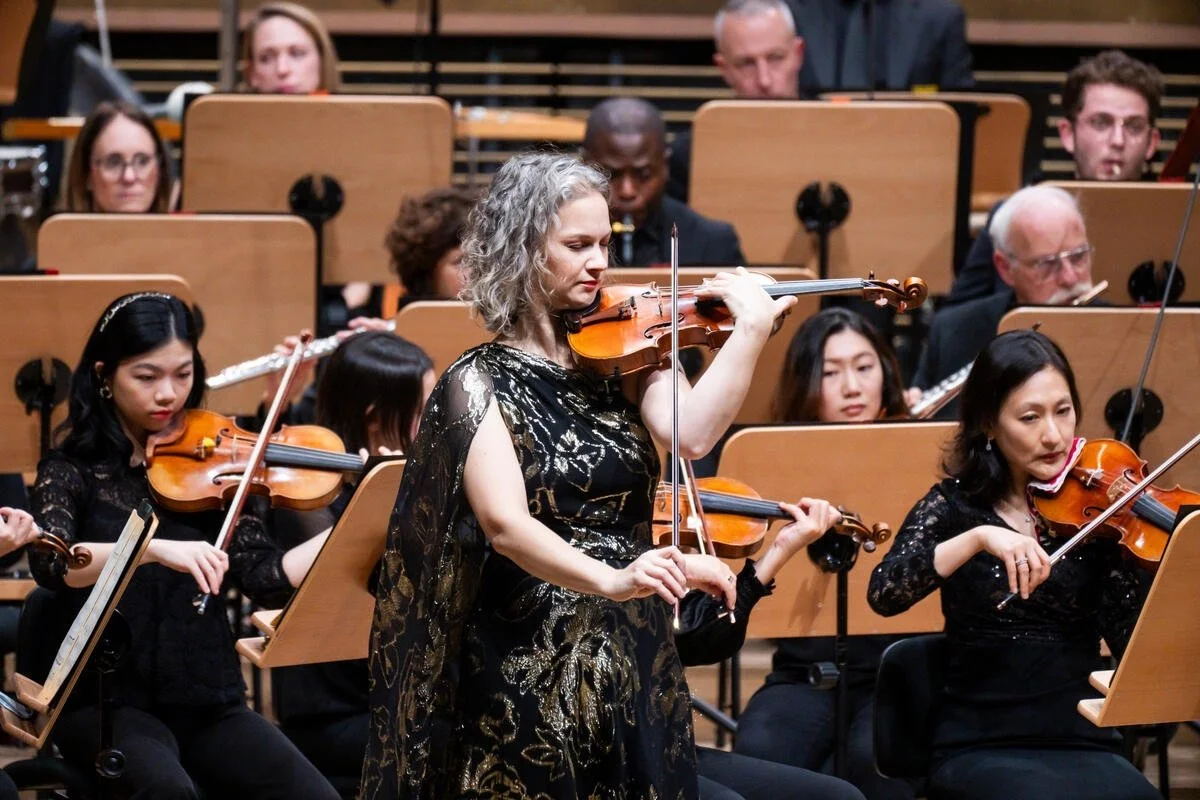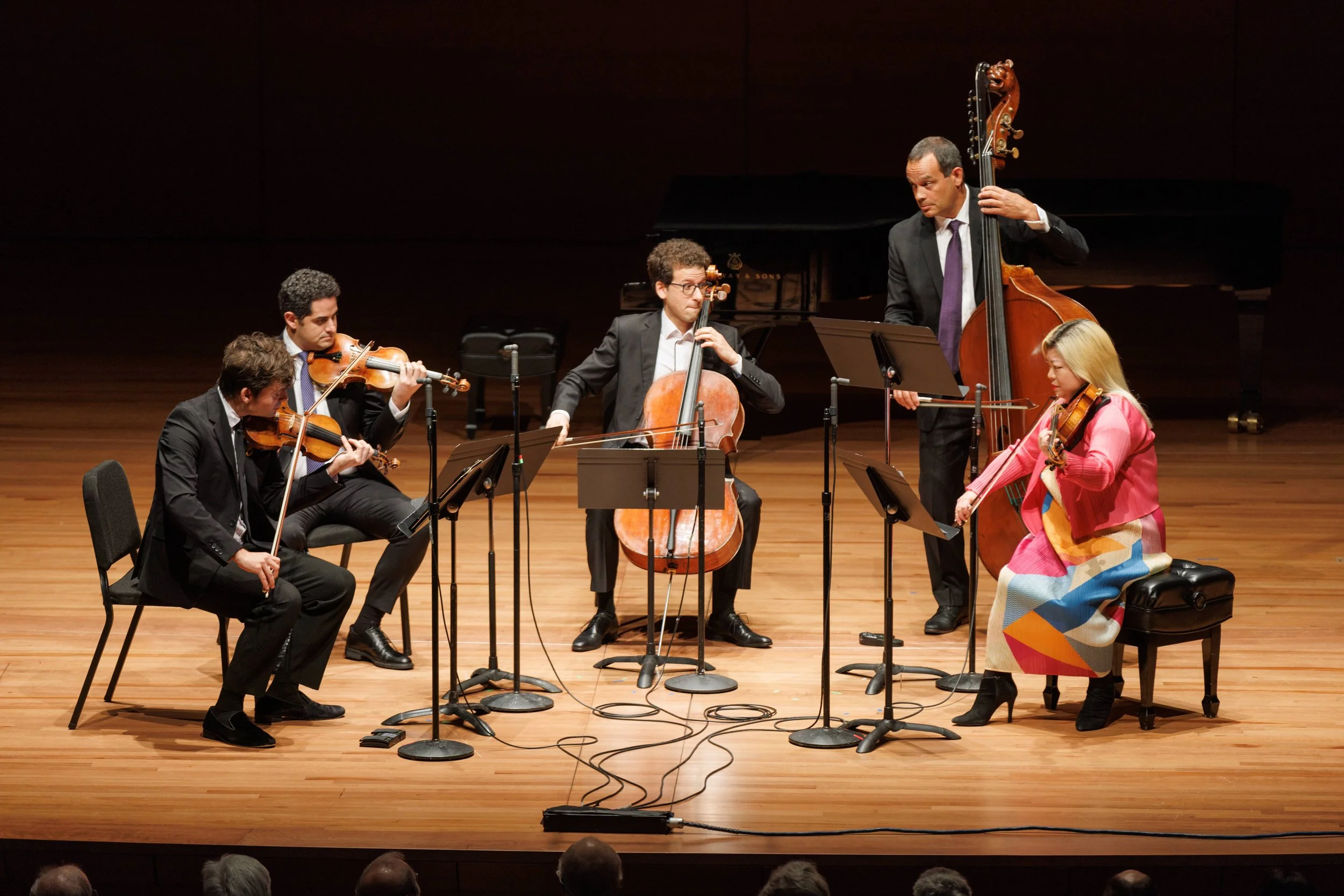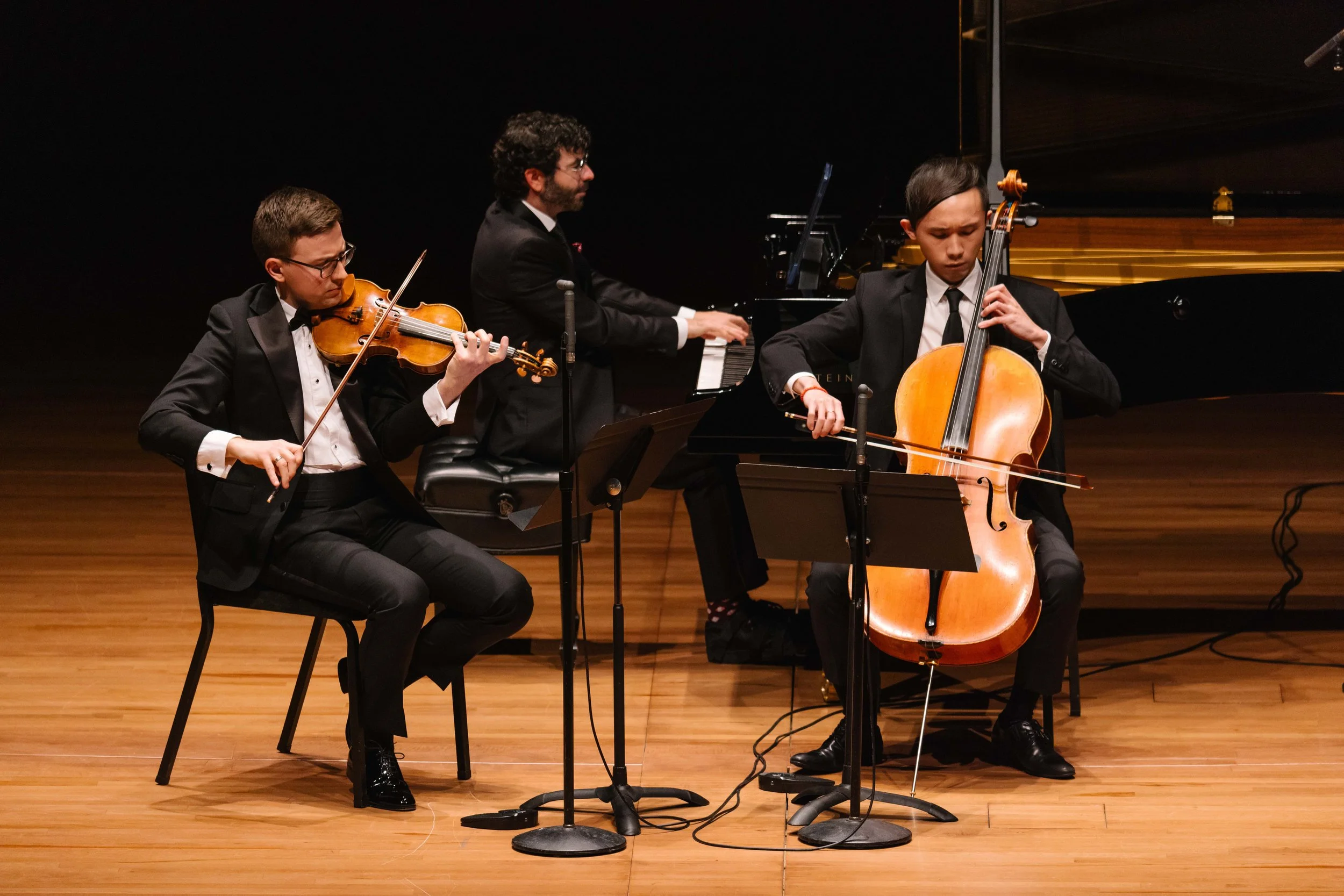If music is either Song or Dance, Inon Barnatan’s solo recital at the 92NY Kaufman Hall — a full-throated essay the pianist called Symphonic Dances — teetered on the border between them, and proved that greatness lies in the balance between them.
PREVIEW: February's Classical Music in NYC
CadenzaNYC’s February 2024 Classical Music Guide to New York City. What’s Playing on concert stages across the city this February.
REVIEW: ASO Revives Dvořák’s Requiem
Antonin Dvořák’s long neglected Requiem, Op. 89, received a rare performance at Carnegie Hall, courtesy of the American Symphony Orchestra under the baton of Leon Botstein. Featuring the Bard Festival Chorale, and a quartet of superb vocal soloists, these sizable and expert forces made a strong case for this grand Requiem mass to be rescued from the shadows of the warhorses by Mozart and Verdi, and for that matter, the composer’s own Stabat Mater.
REVIEW: Cleveland Orchestra Sets Prokofiev's 'Iron and Steel' in Motion
The Cleveland Orchestra, in the second of two concerts as part of Carnegie Hall’s festival Fall of the Weimar Republic: Dancing on the Precipice, revived this avant garde masterpiece, contrasted ingeniously with Anton Webern’s 1928 Symphonie, Op. 21. Composed under threatening political scrutiny under Stalin’s regime, yet during a period when he cleverly evolved a language that defied obvious interpretation, the Fifth Symphony is one of Prokofiev’s most gratifying creations. Welser-Möst’s generous and thoughtful rendering brought New York’s audience to its feet.
REVIEW: Elia Cecino's Revealing New York Debut
Kaufman Music Center’s Merkin Hall fell under the charm of Elia Cecino, an Italian pianist of prodigious virtuosity, at Tuesday’s matinee, witnessing his auspicious New York debut. In a rich program, at once searching and revealing, Cecino carved a distinctive niche on the concert stage. At the precocious age of twenty-two, Cecino embodies the archetype of young hero — teeming with desire and ambition — but also an old soul, wise beyond his years.
REVIEW: Hilary Hahn Soars With New York Philharmonic
Jakub Hrůša conducted the New York Philharmonic this week in a program that featured violin soloist Hilary Hahn being awarded the Avery Fisher Prize. The hall (and lobby, where the NY Phil concerts can now be seen and heard) was impressively full on Saturday night — the last of three concerts featuring this busy superstar of the violin world as she joins the Philharmonic as Artist-in-Residence for the 2023-24 season.
REVIEW: Prototype Festival Unearths "Chornobyldorf"
Chornobyldorf — receiving its US Premiere as part of the tenth season of the Prototype Festival — is described by its creators as an Archeological Opera. Permeating the cavernous blackbox Ellen Stewart Theater at La Mama Experimental Theatre Club, this ambitious multimedia work indeed expands the definition of opera.
PREVIEW: January's Classical Music in NYC
January is a month for new music in New York City. The Prototype Festival is now in its tenth year, and contemporary composers are heard this month on stages across the city—
REVIEW: "El Niño," Nearly, at Cathedral of St. John the Divine
New York’s American Modern Opera Company, under the leadership of Julia Bullock, has devised a version — greatly abridged and reduced in forces — they call El Niño: Nativity Reconsidered. The orchestra, under Reid’s graceful baton, performed with electric precision, sending Adams’ rich tonal harmonies and nervous rhythmic patterns spinning around the cathedral, as if channeling the elements in the air and stone. The Choir of Trinity of Wall Street sounded glorious, and with projected supertitles providing translation, the text was always clear
REVIEW: Bach's Brandenburgs in the Spotlight at CMS
Like Leonard Cohen's "Hallelujah," they have no obvious connection to the holiday season, but they have nonetheless become a beloved holiday ritual for many. I caught the last of three performances at Alice Tully Hall. The musicians performed standing, except of course for the harpsichordist and the cellists, and without a conductor. They used modern, rather than Baroque instruments (again, except of course for the harpsichordist). Solo and ripieno chores were shared, with everyone getting a moment in the spotlight as well as some time in the backup band.
REVIEW: Orpheus Reflects On the American Dream at 92NY
Orpheus Chamber Orchestra, the ultimate chamber ensemble, presented a riveting — and all too rare — reading of Perkinson’s Sinfonietta No. 2, “Generations,” and New York Philharmonic principal clarinetist Anthony McGill joined Orpheus for a stunningly collaborative performance Copland’s Clarinet Concerto.
REVIEW: Isaac Mizrahi's Enchanting "Peter and the Wolf" at the Guggenheim
Sergei Prokofiev’s Peter and the Wolf might be the greatest musical work of the twentieth century, for one important reason — its lasting impact introducing countless children to classical music. Guggenheim’s Works & Process series has kept the tradition alive for more than a decade, presenting Peter and the Wolf every December, in a delightful production conceived, directed, narrated, and designed by Isaac Mizrahi.
REVIEW: Ekmeles Delivers Cryptic "The Little Match Girl Passion"
The musicians of Ekmeles approached the work with reverence, under the baton of conductor Jeffrey Gavett, the performance was impressive for its cleanliness and lack of sentimentality. The percussion clangor was an eerie death knoll in the crypt’s acoustics, but never overpowered the tender, rounded vocals. Well-balanced, and perfectly in tune, and with floaty, unadorned diction, Lang’s Passion is a perfect showcase for the virtuosity of Ekmeles.
REVIEW: Electrifying Conrad Tao Connects With Rachmaninoff
Visionary virtuoso Conrad Tao pounced onto the 92NY stage with an electrifying … program, which Tao called Rachmaninoff Songbook, explores his theory that upon Rachmaninoff’s move to New York in 1918, the Russian composer’s interest in American popular song and jazz influenced his compositions, and vice/versa.Zigzagging across time, Tao made his argument in an eclectic curation reflecting his varied enthusiasms and limitless skills.
REVIEW: TŌN and the MET Revisit 1930s Art Relevant to Today
Copland’s Statements, five movements for orchestra from 1935, have suffered the fate of being, as Botstein remarked, “the ugly duckling” of Copland’s orchestral output. Yet, they are precisely of a piece with the themes in the Met’s exhibit. This is Copland’s musical portrait of America during the Depression.
REVIEW: Labèque Sisters Join Sensuous and Boisterous NY Phil
The New York Philharmonic gave the local premiere of his 2017 concert work Concerto for Two Pianos, composed expressly for the glamorous piano duo of Katia and Marielle Labèque. Semyon Bychkov was a beacon on the podium, emanating a love for the music. With a floating stance, and the hypnotic assurance of a wizard conjuring a spell, Bychkov extracted luxuriant playing from the musicians, suffusing David Geffen Hall with tidy sumptuousness.
PREVIEW: December's Classical Music in NYC
CadenzaNYC’s Picks of the best classical music happening in New York City December 2023.
REVIEW: 'Sturm und Drang' in Landmark Trios at CMS
The Brahms work that concluded the evening remains the most transcendent — among the great composer’s best. Paul Huang, on the violin, and Juho Pohjonen, assuming duties at their keyboard, were completed by Watkins on the cello. The group began the first movement, Allegro moderato, at a bright tempo, setting an urgent pace for this large-scale work’s breadth of sensations. It’s symphonic in scope, yet structurally dense and rhythmically complex, with varied demands for each musician. Pohjonen transcended the piano part’s octave-heavy thickness, so that the first movement had soaring arcs, and in the sentimental coda, when the opening theme returns in the cello, everything seemed different. We emerge changed.



















